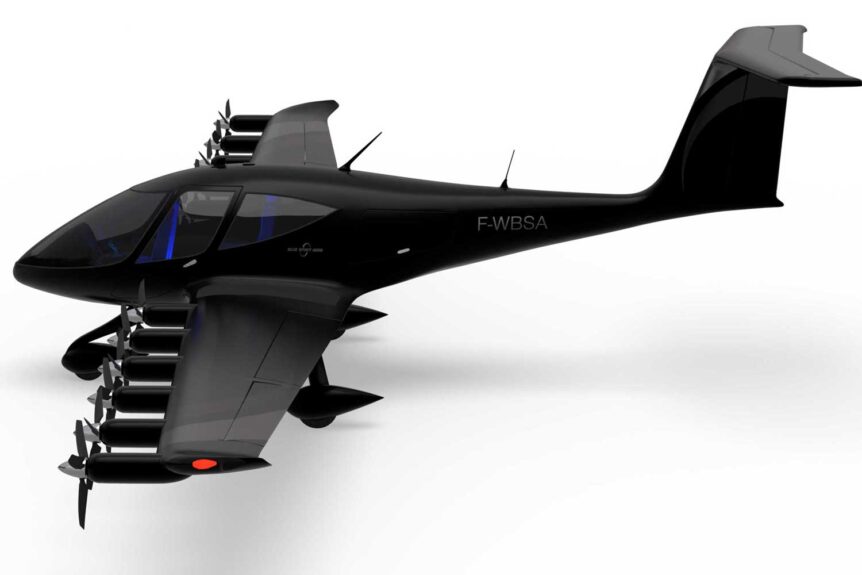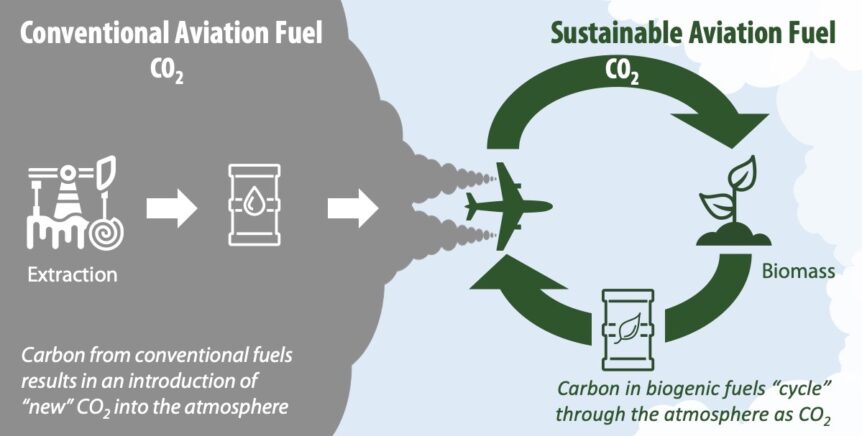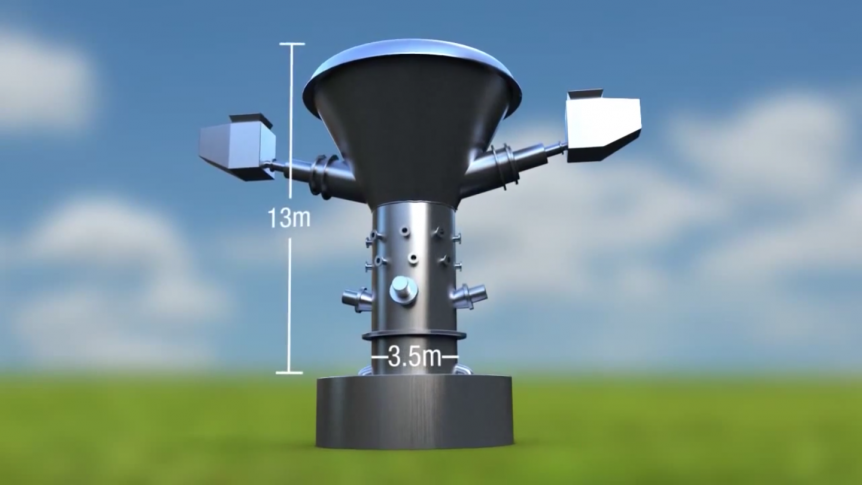Hydrogen capsules, quickly swappable and motor pods easily switched on a long wing share a common theme. H2-Mobile, a French web site, shared three stories that share forms of encapsulation, one pointing back to a story your editor wrote about a decade ago. An HUV (Hydrogen Utility Vehicle) from NamX A French-Moroccan company, NamX showed a car co-developed with Pininfarina, and the sleek sedan reportedly can hit 294 kilometers per hour (182 mph) and accelerate from zero to 100 kilometers per hour (62 mph) in 4.3 seconds. Most surprising, perhaps is the car’s method of storing energy. Michael Torregrossa, writing in H2-Mobile, reports that, “Present for the first time at the Paris Motor Show, NamX lifts the veil on its NAMX hydrogen capsule distribution device. Called CapXtores, this new network will begin its deployments in 2024.” Seemingly a larger version of a capsule battery distribution system created for Gogoro, a Taiwanese scooter manufacturer, the NamX concept car can be refueled …
Cranfield: Hub of Electric Aviation
Cranfield, England and its local university are hubs for electric aircraft development. Dr. Guy Gratton is test flying The Light Aircraft Company’s eKub on 48-Volt battery power, ZeroAvia is crafting a Dornier 228 to run on hydrogen, and now Cranfied Aerospace Solutions (CAeS) is readying a Britten-Norman Islander for H2-powered flight in 2023. The Islander Living up to its name, Britten-Norman’s Islander seems to be busy worldwide island hopping. The twin-engine plane ever makes the world’s shortest scheduled flights, including this between Juist to Norden across the Wadden See. The 74-second flight is less than the time spent taxiing at the beginning and end of the hop. Designed and developed in the 1960s, 750 Islanders of the 1,280 built are in service with many small airlines and over 30 militaries. Now, other enterprises are banding together with Britten-Norman and Cranfield Aerospace Solutions (CAeS) to bring hydrogen flight to the Isles of Scilly, a popular English vacation destination. Three companies signed …
Cementing Sustainable Aviation Fuel (SAF)
Cement, a prime component in concrete, is a major source of the greenhouse gas CO2, according to the Princeton Student Climate Initiative (PSCI). The group reports, “Cement is made by firing limestone, clay, and other materials in a kiln. CO2 is emitted from the energy used to fire the material, and the chemical reaction produced from the mixture when it is exposed to heat. According to the National Ready Mixed Concrete Association, each pound of concrete releases 0.93 pounds of carbon dioxide. Since concrete is such a widespread item, the amount of CO2 released in the industry continues to grow.” Cleaning Up the Process How can cement makers reduce their contribution to global warming and make sustainable aviation fuel (SAF)? The question may seem ludicrous at first glance, but CEMEX, a worldwide manufacturer of cement, has successfully deployed hydrogen-based technology to reduce CO2 emissions in its operations. Tested in Spain in 2019, hydrogen is now a part of all European …
Making Greener-Than-Green Hydrogen
What if we could make “clean” hydrogen from plain water, with none of the problems associated with coal, oil or gas extraction and the waste byproducts produced in extracting brown or blue H2? Several approaches such as artificial leaves have been developed, but a totally different new approach seems incredibly promising. A promising approach may lead to greener-than-green hydrogen. The Race to Invent the Artificial Leaf Varun Sivaram, in his book Taming the Sun discusses how Nate Lewis at Caltech and Daniel Nocera at Harvard “determined to find a way to wring fuel out of thin air.” Each has created an “artificial leaf” that emulates the photosynthesis performed naturally by real leaves. A real leaf is far more complex than one would imagine, and the chemical interactions inside even more so. For all that, photosynthesis is only one percent efficient. “A commercially viable artificial leaf would solve several of the trickiest challenges in clean energy. It would create a way …
Hydrogen from Dirty and Clean Sources
Hydrogen, the first element created from the Big Bang, is the lightest in the periodic table, has the atomic number 1, and is “the most abundant chemical substance in the universe.” (Wikipedia). Until starting this blog entry, though, your editor was unaware that this colorless gas came in brown, blue, and green variants – referring to the methods used to extract h2. Hydrogen can be extracted from some fairly dirty sources, but the dirtiest may lead to an amazingly clean outcome, if we’re to believe what’s happening in Lancaster, California. The Guardian reports, “Broadly, there are currently three ways to make hydrogen. Brown hydrogen is produced when the element is stripped out of fossil fuels such as coal, while blue hydrogen is produced from gas. Green hydrogen is produced from running an electric current through water using an electrolyser powered by renewable energy such as solar.” (A simplified list) Brown H2 from Brown and Black Coal Brown coal has more …





